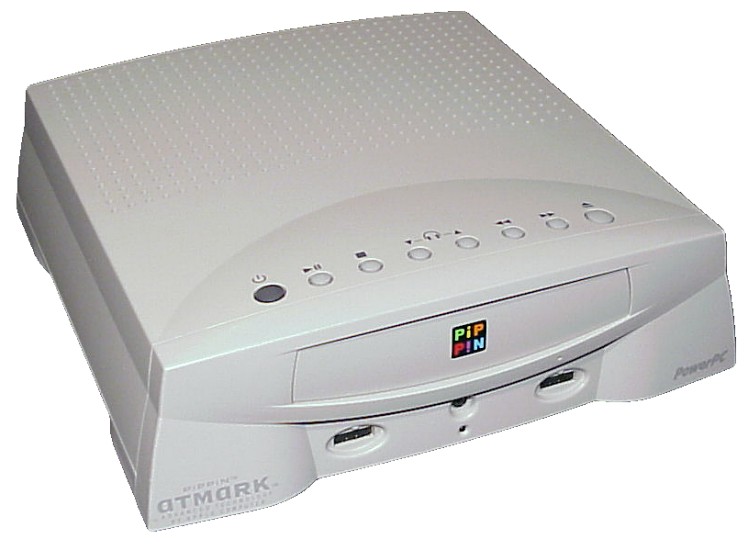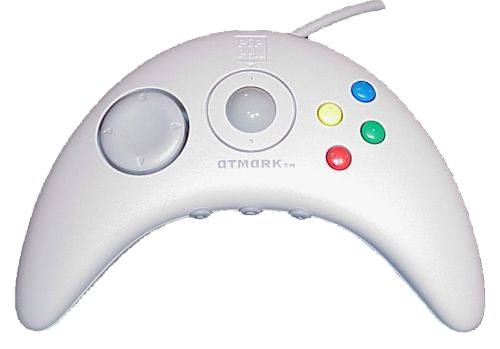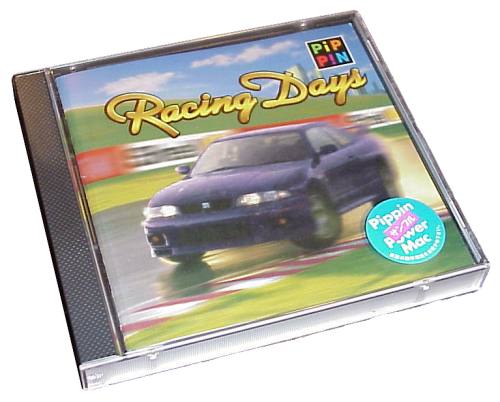
[ Home | FAQ | News | Contents | Indexes ]
See below for specifications and information on this system.

Specifications and information
| Introduced: | 1997 |
| Original Price: | Unknown |
| CPU: | PowerPC 603 RISC |
| Controls: | Modular controllers with directional pads and trackballs, other controllers optional, including keyboard |
| Games: | CD-based games and web browsing software |
The Bandai Pippin is one of the most rare video game systems in existence. It's essentially an Apple Power Macintosh in a set-top-box configuration with game-style controllers. It can display video either on a computer monitor or a TV set (see the rear panel connections below). A floppy drive was optional, as was a keyboard. The Pippin shipped with Internet connectivity software, and connected to a standard Macintosh external modem (there is no built-in modem).
The front panel bears the legend, "ADVANCED TECHNOLOGY BY APPLE COMPUTER". Note that a "pippin", of course, is a variety of apple (yes, the kind that grow on trees -- the Bandai version certainly doesn't grow on trees, it's rare as hen's teeth!).
The Pippin concept was essentially a Apple copy of Commodore's idea for their CD32 console. Like Commodore, Apple thought they could capture some of the game console market by simply repackaging the PowerMac as a gaming machine. At the time, it looked like the 3DO was a serious competitor, and Sega was making noises about a Net Link internet access package for their Saturn system. The Commodore CD32, a game console package of the Amiga computer, was reasonably successful in Europe but less so in the United States (mostly due to a lackluster US advertising campaign by Commodore).
The future looked bright for the Pippin. Unfortunately, two big hits came back to back. First, the 3DO turned out to be a flash in the pan. Nobody wanted an "edutainment/multimedia" system for the home, they wanted the new, cheaper real personal computers. Around the same time, the internet was really taking off. Anyone who introduced a product without an internet spin on it would be largely ignored. So, Apple and Bandai re-spun the Pippin as an internet appliance that also played games. That didn't work either, because, by the time the Pippin was ready to go, PC prices had dropped even more.
The Pippin simply wasn't enough of a price break from a real computer, and the public wasn't ready to surf the web from their television sets. It's believed that less than 12,000 Pippin machines were sold in the United States, and most of those to developers anticipating a more wide release of the platform.
The optional Pippin floppy dock:

Here's what the Pippin looks like with the floppy dock attached:

The Pippin controller pad:

Pippin Software:

The optional Pippin keyboard with touchscreen:

And the Pippin rear panel connections. Note the small switch that configures the Pippin for either VGA or NTSC composite video output.

Send mail to CompanyWebmaster with
questions or comments about this web site.
Copyright © 1997-1999 CompanyLongName
Last modified: April 17, 2003